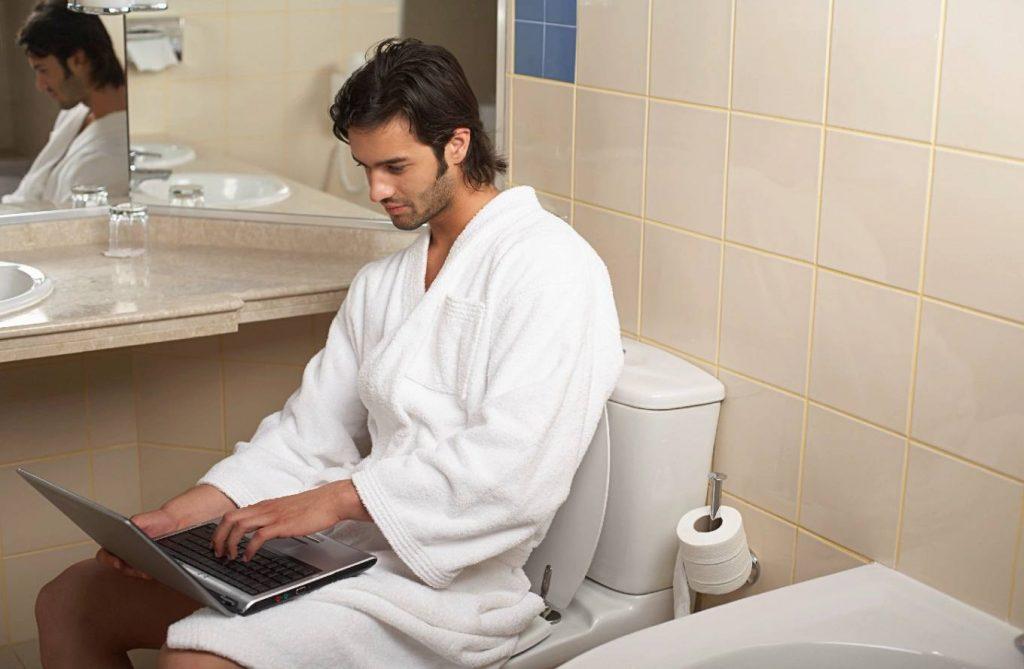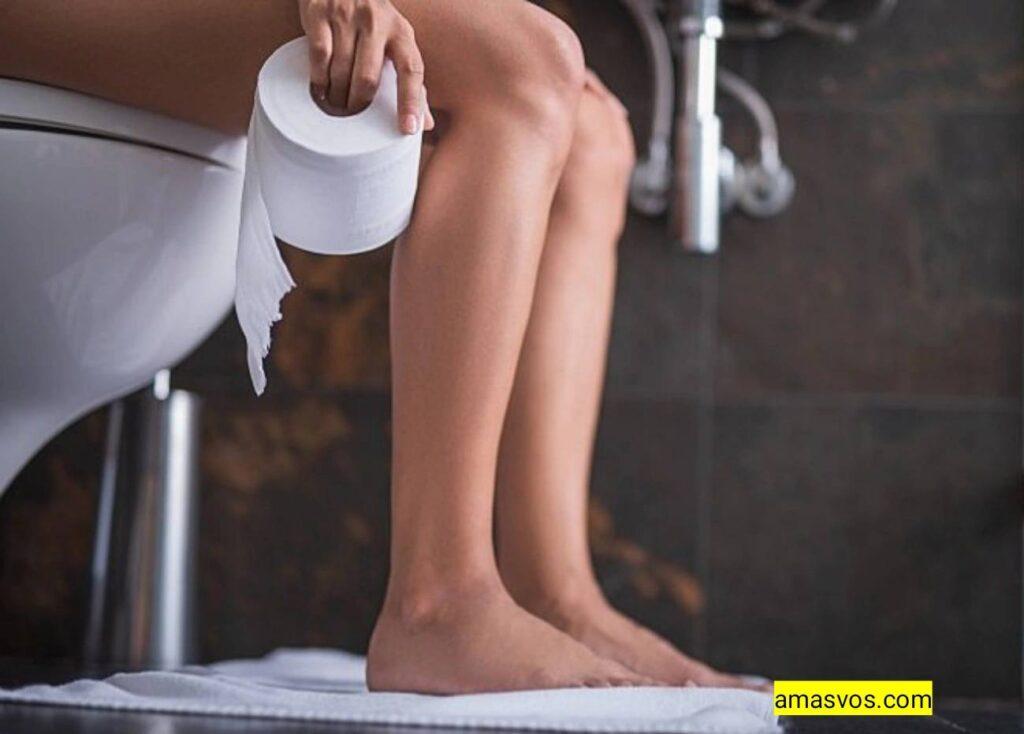Introduction:

Are your legs falling asleep on the toilet? If YES, then read this article to the end. We have some helpful tips to guide you.
There are many reasons why your legs fall asleep outside underlying diseases. Examples include preventing blood flow to a certain area of the body, wearing restrictive footwear or clothing, or spending too much time on the toilet.
“If a person has numbness that lasts more than a week, and starts affecting many areas of the body, or worsens, it is a sign that you should consult a doctor.
In this article we conducted extensive study, which enabled us to come up with this high quality content which will guide you step by step.
Please read this article carefully to the end. If you have any questions, please use the comment form below.
Why Are My Legs Falling Asleep On The Toilet?

1. You’re Seated In An Uncomfortable Manner
When you sit in an uncomfortable position on the toilet for an extended period of time, your legs may fall asleep.
Sitting on the toilet places undue strain on the veins in the rectum, particularly if you struggle to create a bowel movement.
This might result in hemorrhoids, which are swellings of the rectal veins. It can eventually cause bleeding and potentially rectal prolapse. The anus serves as a telescope for the rectum.
Poor posture contributes to stress incontinence, which is when you leak a little pee when you laugh or cough. The posture also reduces the capacity of the pelvic floor muscles to resist pressure.
Please make every effort and acquire a proper toilet sitting position.
2. A Wrong Toilet Height
A wrong toilet height might also be one of the causes of your legs falling asleep on the toilet.
The safest toilets to buy for your bathroom should have a rim height that makes it simple to sit down and stand up, whether it’s billed as “chair height,” “comfort height,” or “tall height.”
Standard-height rims are 14 to 15 inches from the ground and should accommodate shorter persons.
A higher toilet seat reduces the pain caused by crouching and cocking the knees out to the sides. A comfort height toilet is very useful for taller persons, elders, and anyone suffering from knee or back problems.
3. You Are Not Drinking Enough Water
When you don’t drink enough water, your legs may fall asleep on the toilet.
Also, if you don’t drink enough water, hard stools and constipation, as well as stomach discomfort and cramps, may be typical adverse effects.” Skin that is dull.
Dehydration shows up on your face as ashy skin that appears less luminous, and plump.
The National Academies of Sciences, Engineering, and Medicine of the United States decided that an appropriate daily fluid consumption for males is around 15.5 cups (3.7 liters) of fluids per day. Women should drink 11.5 cups (2.7 liters) of fluids every day.
The color of your urine is the simplest method to tell if you’re consuming enough liquids. Your urine should be clean or light yellow if you’re consuming enough water.
A deeper yellow indicates that you are not drinking enough water. People who consume enough water have smooth bowel motions.
4. Sciatica And Lower Back Pain
Sciatica refers to sciatic nerve inflammation, which travels from the lower back to the legs. If this nerve is inflamed or compressed, it might cause numbness or tingling in the legs or feet.
A breakdown or herniation of the spinal discs can induce nerve compression in your legs, resulting in numbness and sensory abnormalities.
The irritation, inflammation, pinching, or compression of a nerve in the lower back causes sciatica pain.
A herniated or slipped disk, which puts pressure on the nerve root, is the most prevalent cause. Most sciatica sufferers recover on their own with time and self-care measures.
5. Disease Of The Peripheral Arteries
The peripheral blood arteries in the legs, arms, and stomach narrow as a result of peripheral arterial disease (PAD).
When walking or moving upstairs, most people feel discomfort and cramps in their legs and hips.
PAD patients may also develop leg numbness and weakness. PAD symptoms usually fade away after a few minutes of relaxation.
It is largely caused by the accumulation of fatty plaque in the arteries, a condition known as atherosclerosis.
PAD can occur in any blood artery, however it occurs more frequently in the legs than in the arms.
If left untreated, PAD might need a significant amputation of the foot or leg. This is especially troubling given that 60% of PAD amputee patients have a life expectancy of only 2 to 5 years.
What Is The Ideal Position To Poop?

- Sit with your knees higher than your hips (use a stool, If required, a foot stool or other flat, sturdy item),
- Put your elbows on your knees and lean forward,
- Relax and expand your stomach,
- Straighten your back.
Why Do My Legs Always Fall Asleep While I’m Sitting On The Ground?
The pressure can momentarily compress nerves in your leg if you sit or have your legs crossed for an extended period of time.
Because of this, the nerves in your leg cannot properly communicate with your brain.
Paresthesia is the medical word for this, although most people just refer to it as their leg (or other body part) “falling asleep.”
The sensation you have of pins and needles is known as paresthesia. It occurs when your nerves become compressed, typically as a result of applying excessive pressure on them.
Nerves are responsible for transmitting information from the rest of your body to your brain that cause you to experience feelings, such as pain. Your nerves can’t accomplish their job of transmitting those messages if they’re under too much strain.
The blood flow in the veins that supply your nerves is reduced by pressure. Your nerves begin to regain function when the pressure on them is relieved, generally by changing positions.
When Should I Be Concerned About Leg Numbness?

More Often.
If you experience frequent or chronic numbness anyplace on your body, you should visit a doctor.
You may be dealing with something more serious than a limb that has “fallen asleep” if the numbness won’t go away on its own or keeps coming back. It’s highly recommended to see your doctor.
Numerous illnesses, including diabetes, peripheral artery disease, fibromyalgia, and multiple sclerosis (MS), can cause long-lasting numbness or a tingling sensation in the legs and feet.
The entire leg, the region below the knee, or various parts of the foot may experience the feeling.
The majority of occurrences of numbness are not significant.
In more extreme situations, it leads to difficulties connected to not experiencing pain (for example, creating burns if unable to feel the agony of high heat) or being ignorant of what’s going on with portions of the body (for example, falling if unable to sense the location of one’s feet).
If you experience prolonged leg numbness, you should consult your doctor and explain your situation properly.
Is It Possible For Heart Issues To Induce Leg Numbness?
Pain, achiness, weariness, burning, or discomfort in the muscles of your foot, calves, or thighs may result from a lack of blood circulation to the legs.
Symptoms may arise during walking or exertion and disappear after a few minutes of rest.
When you are at rest, you may have numbness in your legs or feet. Your legs may also feel chilly to the touch and have pale skin.
Angina, a frequent symptom of coronary artery disease, generates a pressure in your chest that might be accompanied by burning or numbness.
Ischemia is a disorder that occurs when your heart does not receive enough blood or oxygen.
Plaque will eventually break off and entirely obstruct blood flow. This causes a heart attack in the heart.
It can cause discomfort and numbness in the legs and feet if it occurs in the extremities. It may also result in amputation of sections of the foot.
What Does It Signify If Your Legs Frequently Fall Asleep?

The most frequent cause of transient numbness in the legs and feet is poor postural habits that place pressure on nerves or restrict blood flow to the lower limbs.
The medical name for what many individuals refer to as their leg “falling asleep” is transitory (temporary) paresthesia.
It’s essential to pay attention to how frequently and when you feel your legs falling asleep. It’s usually normal and innocuous if it only occurs sometimes, you may treat it by shifting positions or taking a short stroll.
By rotating your foot in all directions (circular motions for 15-20 seconds), you may prevent your legs from falling asleep. This will likely aid with circulation and lessen the numbness or pins-and-needles feeling more rapidly.
A gentle leg stretch while standing, such as bending at the waist and reaching for your toes, may also help “wake up” your feet.
Another Reading Suggestion
What Should You Do If Your Legs Falls Asleep While Using The Restroom?
-
Massage
A foot massage can improve circulation and assist in regaining sensation.
According to research, receiving a foot massage helped non-lymphoma Hodgkin’s patients with their peripheral neuropathy symptoms.
Additionally, this massage enhanced the caliber of your sleep. Gently massage the afflicted region in circular strokes. This stimulates the nerves and muscles while increasing circulation.
Your feet can benefit from a routine rubdown much like your neck, back, and shoulders. Improved circulation, muscular stimulation, stress reduction, and pain relief are among benefits of foot massage.
Additionally, it provides you an opportunity to examine your feet so you can start taking care of blisters, bunions, corns, and toenail issues before they worsen.
-
Try Yoga
Yoga enhances flexibility, balance, and strength.
While maintaining a posture can assist build strength, movement and slow, deep breathing warm the muscles and promote blood flow.
As you balance on one foot, hold the other foot at a right angle to your calf or above the knee (never on the knee).
Yoga has been shown to enhance quality of life and lessen back pain, tension, and other negative emotions.
Additionally, it has been discovered to reduce blood pressure and heart rate. According to the alternative medicine center, yoga has been proven to increase fitness, strength, and flexibility.
“Yoga treatment relaxes blood arteries, lowers blood pressure, and increases blood flow to the heart muscle.”
More oxygen-depleted blood (containing carbon dioxide and other cellular waste) is given to the lungs to be breathed out when blood flow to the heart increases.
-
Apply Heat Therapy
Heat helps to relieve muscular tension and stiffness. It relaxes the knotty veins, improving blood circulation and lowering inflammation and discomfort.
Toxins and other detritus from the injury are flushed out of your system by adequate blood flow.
Heat treatment dilates blood vessels, resulting in increased blood flow. This increases blood flow to the sore or stiff location. Heat also travels from the skin’s surface deep into the muscles, improving blood circulation.
Heat treatment is not recommended for acute injuries such as muscular sprains, strains, knee injuries, fractures, or dislocations.
Heat treatment, like cold therapy, should never be used on open wounds and should be avoided by individuals with circulation difficulties.
Final Concepts
We discovered that those with inflammatory bowel diseases had more than 5% risks of experiencing leg numbness.
Legs falling asleep can be easily caused by you sitting on the toilet in an inconvenient position, which can compress blood vessels or nerves.
Please be mindful of how you use the restroom; always make sure you sit in a proper and comfortable position.
Hope this article was helpful to you? Why not leave a comment below? And also subscribe to this blog for more information. Thanks.


